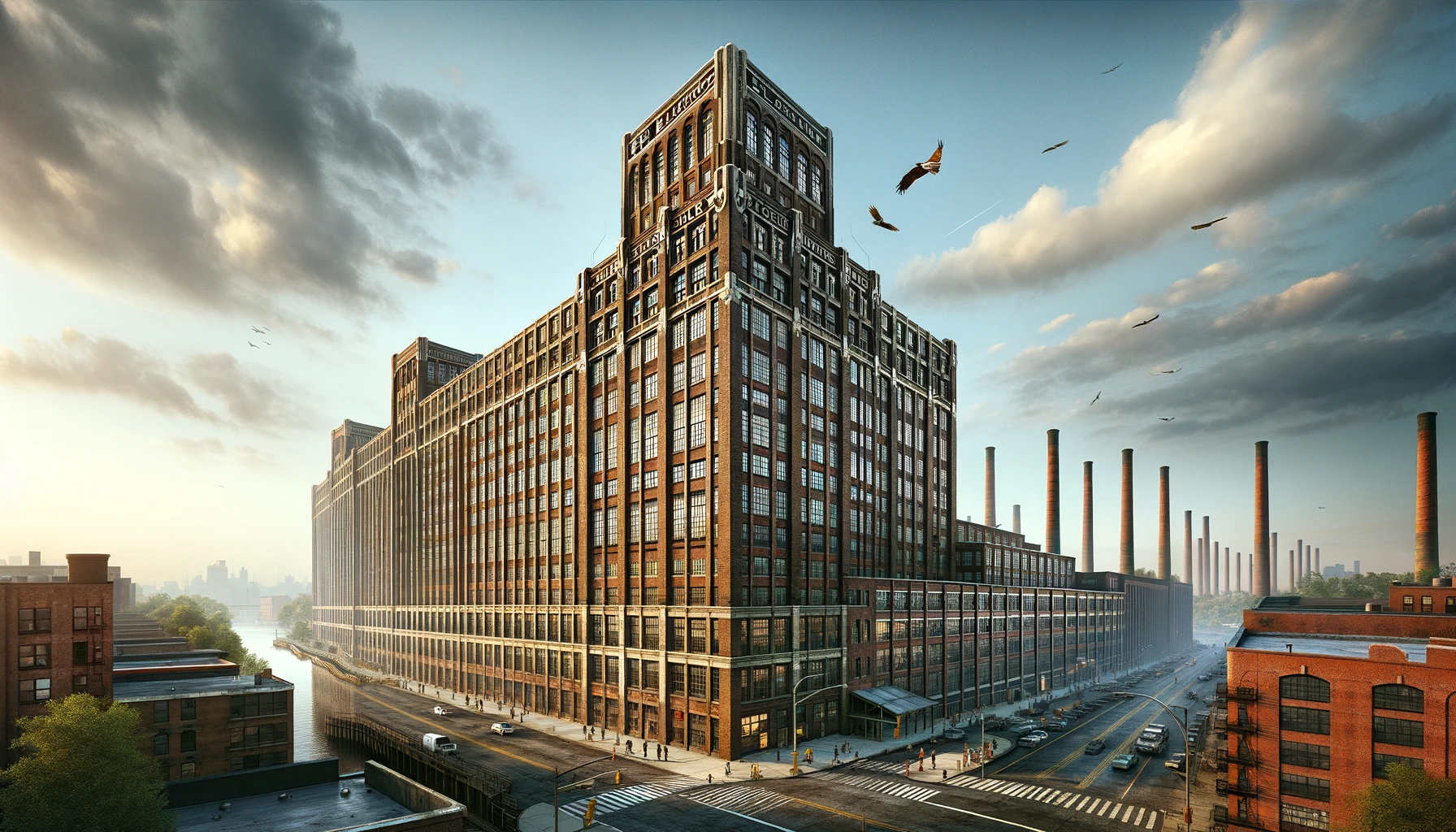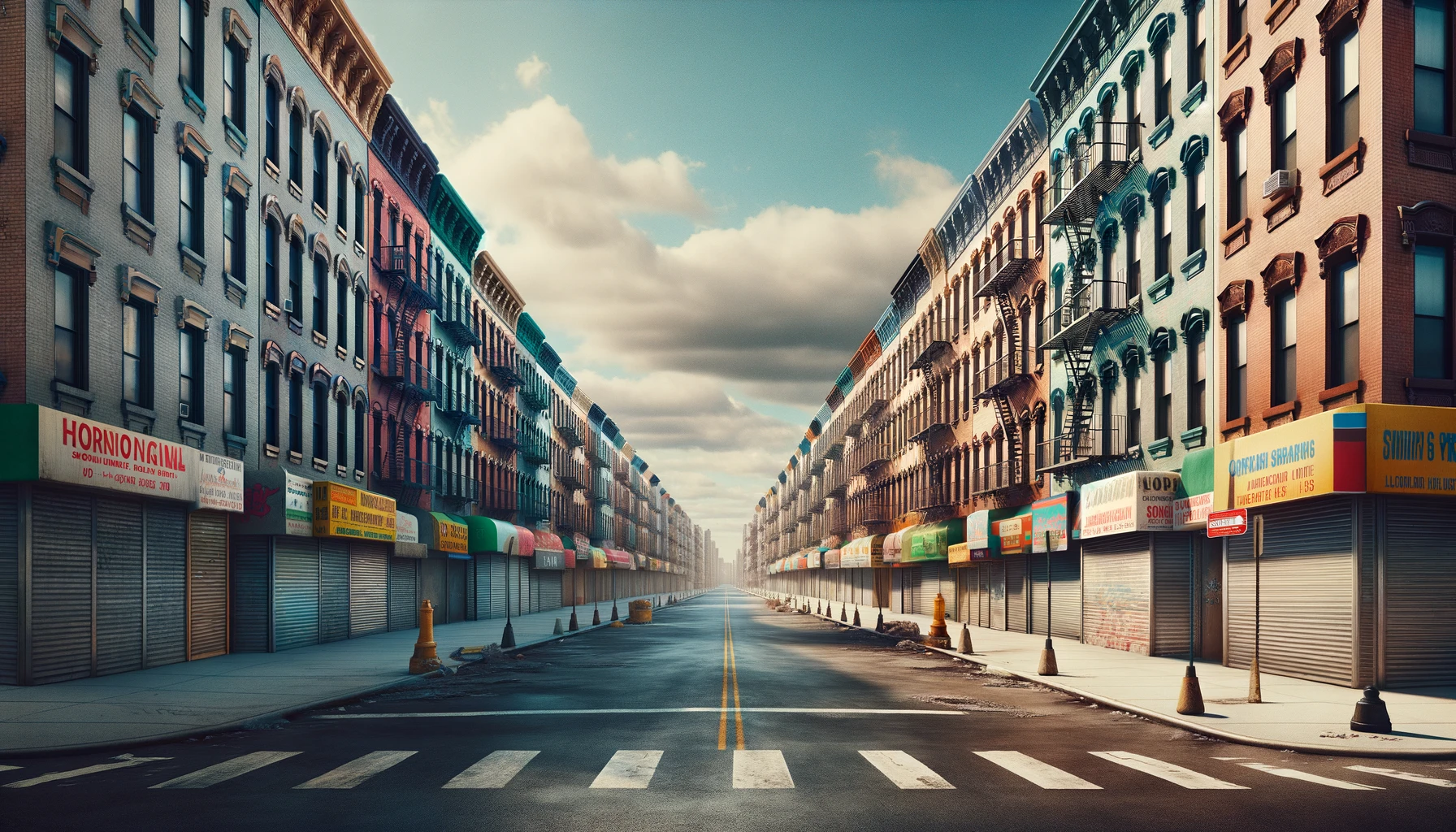Nestled within the sprawling urban landscape of New York City lies Astoria, a neighborhood that traditionally buzzes with a rare blend of cultural vibrancy and quaint, unassuming charm. Known for its melting pot of cultures, affordable eateries, and a close-knit community vibe, Astoria has long been considered a hidden gem, overshadowed by the glaring spotlights of Manhattan and the trendy facades of Brooklyn. This neighborhood, with its family-run shops and graffiti-adorned alleys, has always offered a breath of fresh air to those tired of the city’s relentless pace.
Yet, as I meandered through the familiar streets recently, a sense of unease began to settle in, growing with each step that drew me closer to the site of the old Eagle Electric building. What I encountered there was a stark symbol of transformation, one that extended far beyond the physical restructuring of bricks and mortar. The newly renovated structure stood before me, flaunting its modernized facade, a clear sign of the neighborhood’s accelerating departure from its original identity. This encounter with the Eagle Electric building was not just unsettling—it was a revelation, igniting a growing fear within me that Astoria, as we know it, is fading away.

The relentless wave of gentrification, once a distant rumble, has crashed upon our shores with full force, carrying with it a tide of change that threatens to erode the very foundations of our community. This process, while praised by some for bringing renewal and development, often acts as a double-edged sword, stripping neighborhoods of their unique character and displacing long-standing residents. In the case of Astoria, the transformation of the Eagle Electric building from a historic landmark into a contemporary complex epitomizes the broader trend of cultural and architectural homogenization. As I stood there, taking in the altered skyline, a question lingered in the air: At what cost does progress come?
This introspection led to a deeper understanding of the significance behind these changes. Astoria’s struggle is not unique in the grand tapestry of urban development, yet it feels profoundly personal to those who have called this neighborhood home. The shift reflects a larger narrative of change that challenges the balance between growth and preservation, raising important questions about the future of our urban landscapes. As we delve into the story of the Eagle Electric building, we uncover not just the tale of one structure’s transformation but a chapter in the ongoing story of Astoria’s identity crisis. In this exploration, resources like https://essaypro.co/ can offer insights into the complexities of urban development, providing a platform for deeper analysis and discourse on the implications of such transformations.
The role of platforms like essaypro.co, with its pool of pro essay writers, becomes increasingly pivotal in such a context. These experts not only assist in articulating the nuanced perspectives around urban renewal but also provide a voice to those who may feel disenfranchised by the rapid transformations engulfing their communities. Whether it’s through academic research, op-eds, or reflective essays, the contributions of professional writers enrich the dialogue, ensuring a multiplicity of voices are heard. This collaborative exchange of ideas fosters a more inclusive debate on the merits and demerits of gentrification, empowering residents and policymakers alike to navigate the delicate balance between progress and preservation.
Description of the Old Eagle Electric Building
The Eagle Electric factory was not merely an architectural structure; it was a vibrant testament to the rich tapestry of Astoria’s industrial era, teeming with the history and gritty charm that defined the neighborhood’s character. Its robust, unadorned structure and practical design mirrored the ethos of a community built on the foundations of hard work, resilience, and a strong sense of belonging. This edifice was a beacon of Astoria’s golden age of industry, a period when the neighborhood was bustling with activity, and the streets echoed with the stories of its inhabitants. The factory’s towering presence and sturdy red brick walls served not only as a backdrop to daily life but also as a constant reminder of the collective history and architectural integrity that the community held dear. Before its transformation, the Eagle Electric building stood majestically, a symbol of pride and historical significance, deeply respected and revered by those who passed its threshold, embodying the spirit of an era that is increasingly being consigned to memory.
Critique of the Renovated Building
The transformation of the Eagle Electric building from a monument of industrial heritage to a modern residential complex is a narrative of profound loss. The renovation process, described in the kindest terms as misguided, has effectively erased the building’s soul. The robust industrial charm has been supplanted by the uninspired aesthetics reminiscent of a second-rate vacation property. The building’s proud red brick facade, once a hallmark of its identity, has been coated in an unremarkable shade of beige, a color that fails to inspire or engage the onlooker. The introduction of terraced balconies fractures the building’s architectural coherence, imposing a disjointed aesthetic that is at odds with its surroundings. Furthermore, the decision to compromise on ceiling heights to cram in additional floors reflects a profound disconnect from contemporary living preferences, which celebrate spaciousness and natural light as essential components of habitability and comfort. This architectural misstep signifies not just a loss of physical attributes but a deeper misunderstanding of the values and aspirations of modern urban dwellers.

Broader Implications of the Renovation
The significance of the Eagle Electric building’s renovation transcends its physical boundaries, symbolizing a pervasive trend of negligent urban development that threatens the very essence of Astoria. This approach, prioritizing short-term gains over the long-term welfare of the community, signifies a troubling shift away from the preservation of architectural heritage and cultural identity. The homogenization of urban spaces, as seen in the Eagle Electric’s renovation, is a harbinger of a future where uniqueness and character are sacrificed at the altar of profit and uniformity. Such developments are not merely architectural decisions; they are reflections of societal values and priorities, signaling a departure from the appreciation of diversity and heritage towards a bland, one-size-fits-all urban landscape.
Personal and Community Reactions
The unveiling of the renovated Eagle Electric building was met with a wave of discontent that rippled through the community, a testament to the collective sense of loss and disillusionment felt by many. The building, once a source of communal pride and a focal point of local history, has been reduced to a symbol of what has been irretrievably lost. The community’s response, ranging from disappointment to vehement opposition, underscores the deep connection between people and the places they inhabit. This shared sense of history and identity, once embodied by the Eagle Electric building, now finds itself at odds with the forces of change and modernization. The emotional reaction of the community serves as a poignant reminder of the value of architectural and historical preservation, not just for the sake of nostalgia but as an essential component of a living, breathing community’s identity.
Critique of Broader Development Trends in Astoria
The fate of the Eagle Electric building is not an isolated incident but a symptom of a broader trend of development that prioritizes economic interests over cultural and historical integrity. The gradual replacement of local businesses and landmarks with generic commercial entities and luxury developments is indicative of a shift in the neighborhood’s identity, from a vibrant community with a rich historical fabric to a sanitized, homogenous enclave. This trend towards gentrification and commercialization not only erodes the unique character of Astoria but also displaces the very essence that once made it a beloved and diverse neighborhood. The community’s growing disillusionment with these developments reflects a broader discontent with the direction in which urban planning and development are headed, raising urgent questions about the kind of future we envision for our cities and neighborhoods. The systematic dismantling of Astoria’s charm and character in favor of a more polished but less soulful urban environment is a cautionary tale of the costs associated with disregarding the value of community, heritage, and diversity in the relentless pursuit of development and progress.
Conclusion
The unfolding narrative of the Eagle Electric building, with its layers of history stripped away in favor of modernity, casts a long shadow over Astoria’s future. This episode is not merely a standalone event but a glaring beacon, illuminating the crucial battleground for the soul of urban neighborhoods everywhere. Astoria, with its rich tapestry of cultures, histories, and architectural marvels, stands at a precipice, facing the all-too-common threat of becoming submerged in the anonymity of the metropolitan expanse. The transformation of the Eagle Electric building from a symbol of industrial resilience to a beacon of generic redevelopment is a stark reminder of what is at stake.

Preserving the architectural and cultural integrity of Astoria transcends the mere act of saving old structures from the wrecking ball. It is an endeavor that touches the very essence of community life, weaving together the threads of memory, heritage, and identity that define our collective existence. The battle for Astoria’s soul is emblematic of a wider struggle to retain the uniqueness of our urban landscapes in the face of homogenizing forces. This fight is not just about resisting the erasure of physical landmarks but about safeguarding the diverse narratives and lived experiences that these places embody.
Moreover, this challenge prompts a deeper reflection on the values and priorities that guide our approach to urban development and renewal. It calls for a reimagining of progress, one that harmonizes the need for growth with the imperative to preserve the distinctive character and spirit of our neighborhoods. The response to the renovation of the Eagle Electric building, marked by a collective sense of loss and a rallying cry for preservation, underscores the profound connection between place, memory, and identity.
As we stand at this crossroads, the question before us extends beyond the fate of one building or even one neighborhood. It is a question about the kind of cities we want to inhabit and leave for future generations. Do we envision urban spaces that are vibrant tapestries of history and culture, or do we resign ourselves to living in sterile replicas devoid of character? The saga of the Eagle Electric building urges us to choose wisely, reminding us that the essence of a place is not in its bricks and mortar but in the stories and memories it harbors.
The struggle to preserve Astoria’s unique identity is indeed far from over. It is a cause that demands our passion, our vigilance, and our unwavering commitment. As we engage in this fight, let us be guided by a vision of urban development that cherishes diversity, respects history, and nurtures community. For in preserving the soul of Astoria, we affirm our deepest values and aspirations, forging a legacy of resilience and beauty that will endure for generations to come.